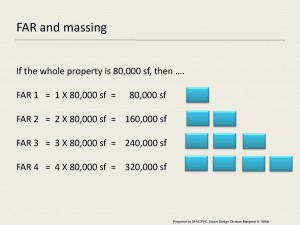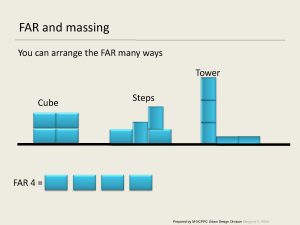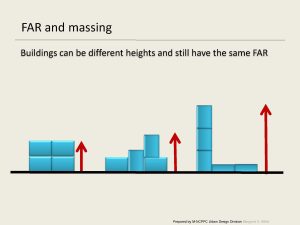
How Big Can You Build a Building? (And What is Floor Area Ratio - FAR?)
Source: Montgomery County Planning; City of Takoma Park
The zoning for a property sets parameters for how much building can be built on that land. One important piece of that equation is the Floor Area Ratio, or FAR. FAR determines a site’s allowed development as a ratio of building area over lot area.The bulk allowed by FAR can be configured in different ways. Conceptually, for example, an FAR of 1 would allow a one-story building that covers the entire property area or a two story building that covers half the lot or a three-story building that covers a third of the lot.
In urban areas, FARs tend to be high, around 6 or 7 in downtown Washington and around 19 or 20 in midtown Manhattan. To planners and developers, FAR is the most fundamental dimensional standard of a zoning code. It determines a lot’s development potential and hence its value. An FAR of 4 is worth twice as much as an FAR of 2.
FAR allows a great variety of building designs, but can’t address the details of setbacks (the required distance from the lot lines for a building), build-to lines, and human-scale features like windows, doors, and materials. The configuration of a lot and the natural features such as topography, trees, stream buffers will all influence the shape and design of a building. FAR controls bulk, but the character of a street comes from the fine grain.



